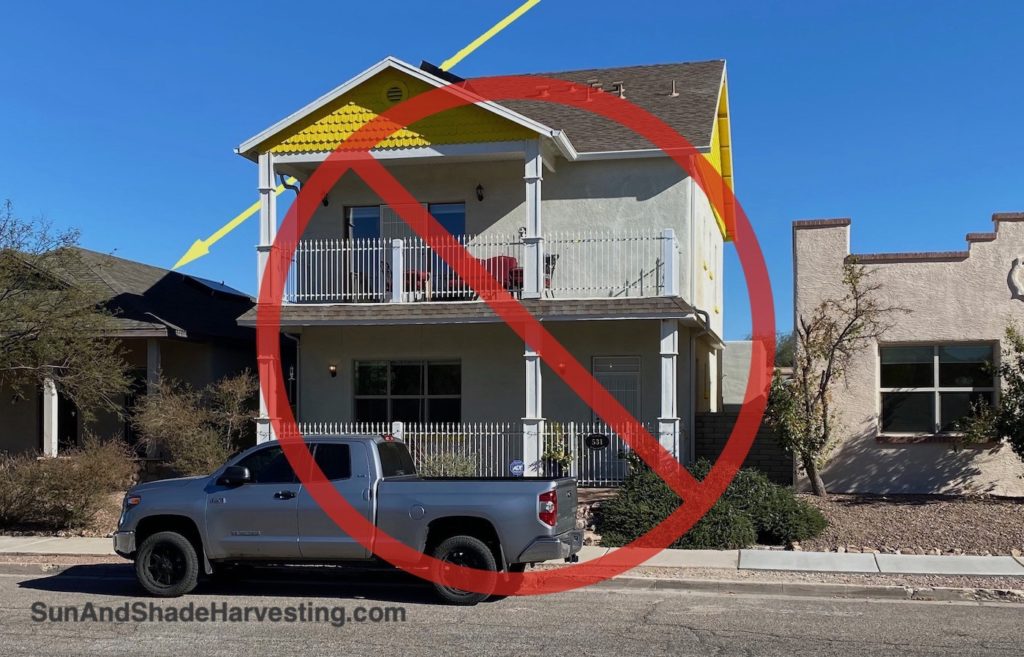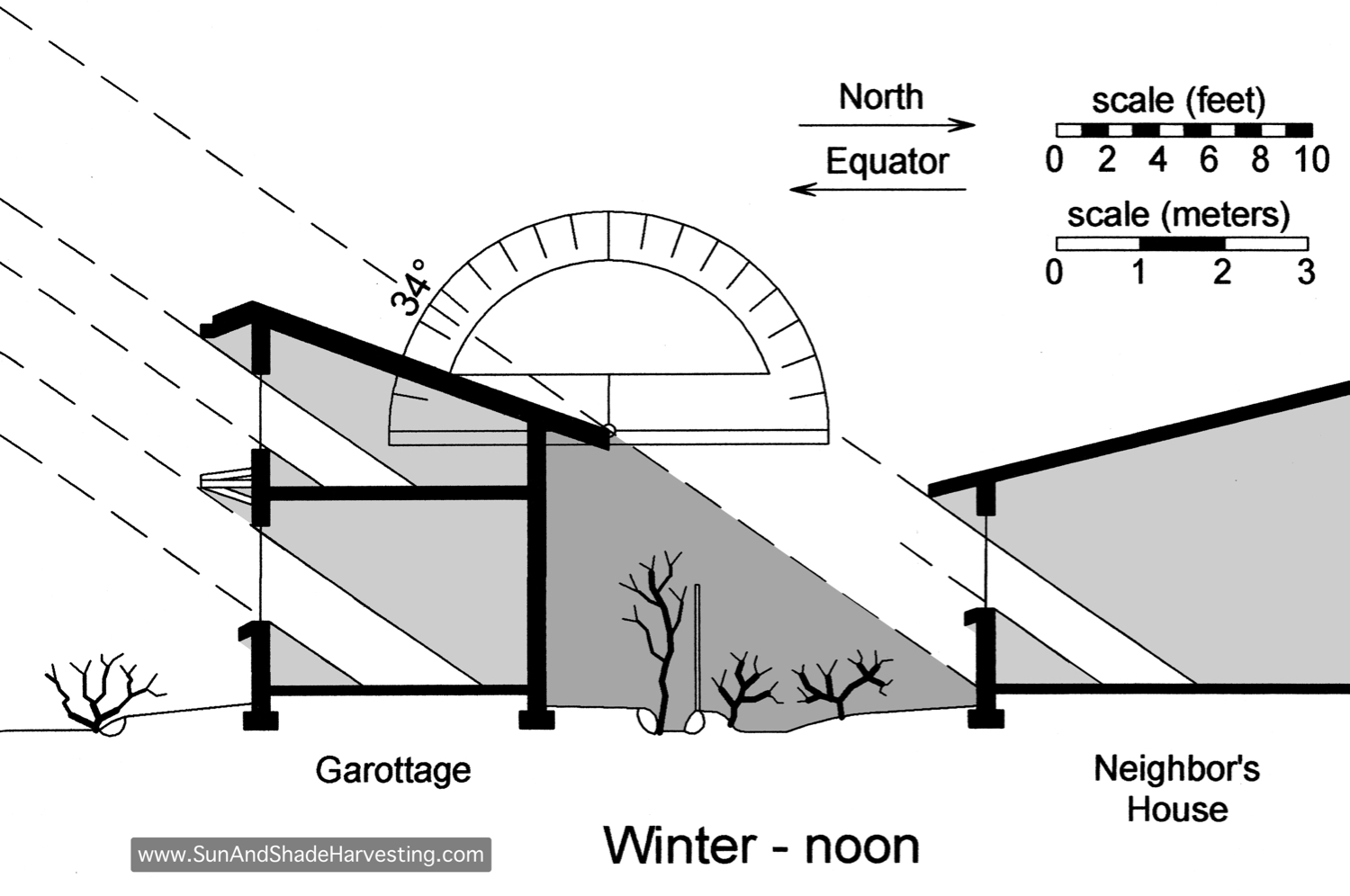Solar Easements & Solar Rights Resources
Solar rights are cultural and legal rights to access and harness the rays of the sun. They can vary widely depending on where you live and local laws…
When solar rights enter the world of legal terminology, terms vary or shift with nuance. Below are three common terms and how they may be defined:
Solar Access – the ability to continue to receive and utilize sunlight on one’s property, across property lines, without obstruction from another property (e.g., buildings, trees, or other impediments)
Solar Easements – the right, expressed as an easement, restriction, covenant, or condition contained in any deed, contract, or other publicly recorded document assuring a landowner adequate solar access for solar energy systems and/or passive solar (lighting, cooking, growing crops, clothes drying, heating, and cooling) systems
Solar Rights – the ability to install and utilize solar-energy systems and/or passive solar systems on property subject to public or private land-use restrictions (e.g., homeowners association Declaration of Covenants, Conditions, and Restrictions (CCRs))

The homes have been placed so close together they shade out their neighbors’ access to the winter sun.
Photo taken in winter. Tucson, Arizona, USA
South, and the winter sun, is to the right side of the photo. Fronts of homes face west.
House on right shades first floor windows of neighbor’s house that would otherwise access winter sun for free heat and light.
Two-story house shades out entire winter-sun-facing side of northern neighbor’s including their solar water heater (on roof)—thereby turning a “sustainable” solar hot water heater into an unsustainable, non-functioning appliance in winter.
This development markets its homes as energy efficient with active sun-harvesting photovoltaic panels and solar water heaters, but it is nowhere near as efficient as it could’ve been had it also incorporated/integrated passive sun & shade harvesting strategies, such as maintaining full winter sun access for all homes.
See the Winter-Solstice Shadow Ratio for your latitude in Rainwater Harvesting for Drylands and Beyond, Volume 1, 3rd Edition to maintain winter sun access on your site (and for your neighbors).
Photo: Brad Lancaster
A Comprehensive Review of Solar Access Law in the United States
www.solarabcs.org/about/publications/reports/solar-access/
New Mexico’s Solar Rights
For information contact the Energy Conservation and Management Division, NM Energy, Minerals and Natural Resources Department. For a downloadable PDF on the subject, go to:
www.emnrd.state.nm.us/ECMD/LawsRegulationsExecutiveOrders/documents/SolarRightsAct.pdf
Project Laundry List
Works toward making air-drying and cold-water washing laundry acceptable, legal, and desirable as simple and effective ways to save energy. Great info and activism.
www.laundrylist.org
The Solar Envelope: How to Heat and Cool Cities Without Fossil Fuels
Great article on passive solar design for cities, and how Ralph Knowles proved passive solar design could be implemented without limiting desired high-densities in urban areas.
www.lowtechmagazine.com/2012/03/solar-oriented-cities-1-the-solar-envelope.html
Opportunity Outside of Shadow: A New Paradigm for City Planning
Great info on historic solar rights and solar easements in England, plus design tips to maintain solar access within cities in all latitudes, by Sean Scott, Trim Tab, Winter 2012.
www.pageturnpro.com/Cascadia-Green-Building-Council/35580-Trim-Tab-v12–Winter-2012/index.html#46
Right to Light
A form of easement in English law that gives a long-standing owner of a building with windows a right to maintain the level of natural, passive, free illumination through the windows from the sun. It is based on the Ancient Lights law.
en.wikipedia.org/wiki/Right_to_light
Living Building Challenge Imperative 18:Rights to Nature
The Living Building Challenge is the most sustainable, integrated green design certification I’ve come across, setting a much higher bar than LEED. You must meet or exceed 20 Imperatives/requirements. Imperative 18:Rights to Nature covers solar rights and solar access. The full Living Building Challenge 2.0 can be downloaded from the website below.
ilbi.org/lbc/standard
Solar Rights by Sara C. Bronin, Boston University Law Review, Vol. 89, p. 1217, 2009. Discusses the value of solar access/rights and of attempts to assign solar rights in different countries over time, and how American efforts have fallen short.
Modern Lights by Sara C. Bronin, University of Colorado Law Review, Vol. 80, p. 101, 2009. A companion piece to Sara’s Solar Rights, this article proposes a framework within which a comprehensive solar-rights regime might be developed.
Boulder, Colorado Solar Access Code
www.smartcommunities.ncat.org/codes/boldera1_gb.shtml
What initiated first comprehensive zoning resolution in U.S.
NYC Dept of Planning website describes how a seven-acre shadow cast by one of the first skyscrapers in Manhattan initiated the first comprehensive zoning resolution in the U.S. in 1915.
www.nyc.gov/html/dcp/html/zone/zonehis.shtml
Examples of ancient sites retaining and utilizing solar rights/access
Ancient Passive-Solar Design image gallery

Roof of house on left/south is angled, and its height is limited, to maintain solar access for neighbors house to right/north.
Shadow shown is cast at noon on the winter solstice.
Protractor shows angle of sun at noon on winter solstice at 32˚ N latitude.
See Rainwater Harvesting for Drylands and Beyond, Volume 1, 3rd Edition for more.
For more
On how to assess the winter solar exposure (or lack of it) on your site, then make the most of it, see chapter 4 and appendix 7 of Rainwater Harvesting for Drylands and Beyond, Volume 1, 3rd Edition—available at deep discount direct from the author

